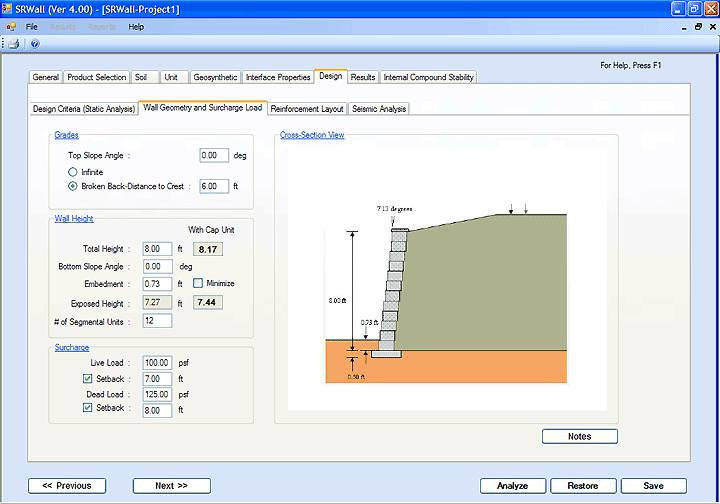

Seismic effect is considered by adapting horizontal and vertical seismic coefficients as 0.5 in the analysis. In the analysis, to account for effect of interaction between soil and reinforcement, coefficient of interaction (Ci) is considered. External stability (Global stability) of MSE wall is also carried out using various methods of analysis such as., Bishop, Fellinius, Janbu, Morgenstern-Price and Spencer methods. Detailed investigation is performed to understand the effect of vertical spacing of geogrid reinforcement and its stiffness on the stability of wall. In the present study, three-dimensional 4 m height MSE wall analysis is carried out using GEO 5 software to check internal and external stability. Each of the reinforcement in the block should be checked against slip, pullout and tensile resistance. Internal and external stability of MSE wall mainly depends upon interaction between the backfill soil and reinforcement, stiffness of reinforcement and vertical spacing between reinforcements.

The MSE wall is used in many areas of central, state and private projects, as construction is simple and rapid, cost effective, stabilized structure and reduced right of way acquisition. This wall behaves as a coherent block considered as flexible, which can sustain loading types and deformations due to the interaction between the backfill and the inclusion materials. The Mechanically Stabilized Earth (MSE) wall is used as an alternative designed structure for conventional cantilever walls and gravity walls. The paper is directed towards designers and specifiers of the materials and methods used for SRWs. This paper will serve as a useful guide for practioners, particularly those designing with the aid of software based upon the earlier Second Edition of the DMSRW. This paper summarizes these changes and discusses the rational for each. The Third Edition of the DMSRW, completed in 2006, incorporates significant changes in the state-of-the-practice regarding MSEW and SRW topics.

The Second Edition of the DMSRW was published in 1997 and the companion NCMA Segmental Retaining Wall Drainage Manual was published in 2002 the latter provided general guidelines for incorporating surface and subsurface drainage details and systems into SRW design and construction to minimize the potential for hydrostatic forces to develop and to provide guidance for including hydrostatic forces when drainage alone will not eliminate the potential for water to load the SRW.

The National Concrete Masonry Association (NCMA) published the First Edition of the Design Manual for Segmental Retaining Walls (DMSRW) in 1993 to provide a standardized engineering approach for the analysis and design of conventional and reinforced soil segmental retaining walls (SRWs).


 0 kommentar(er)
0 kommentar(er)
